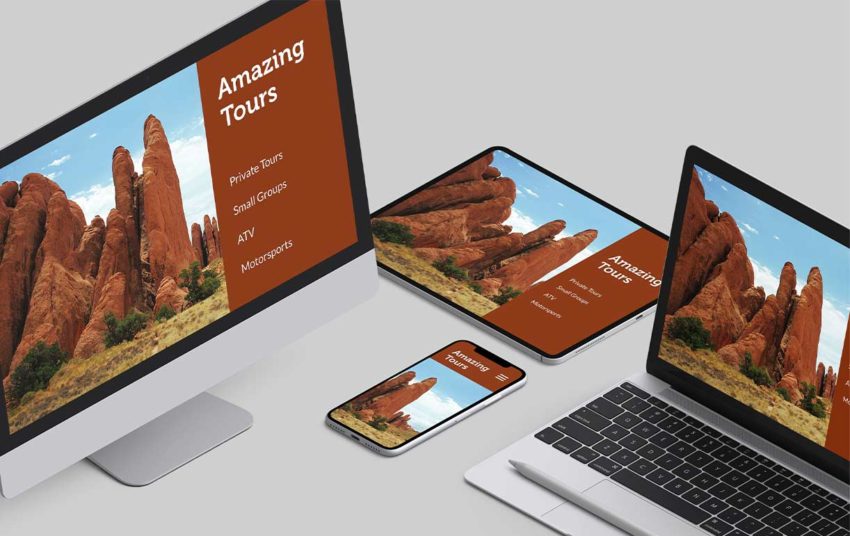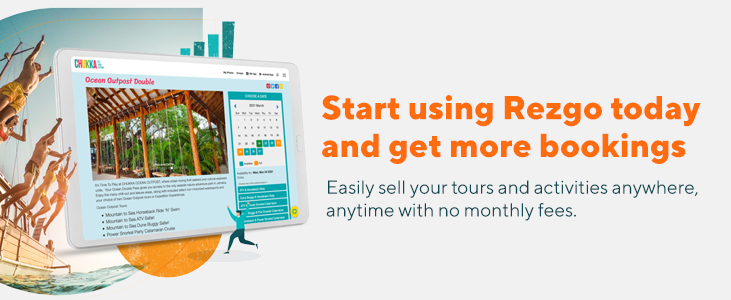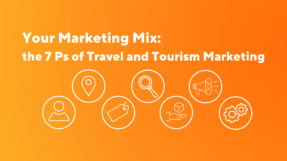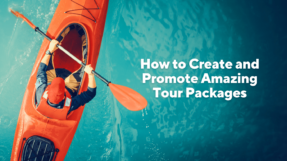What is Branding?
Branding is all about establishing your business’ image in front of your audience. In other words, what do your customers think and feel when they see or hear your brand name? With a proper branding strategy in place, you will be able to influence your audience’s perception of your brand in the way that you want.

Why is Branding in the Travel and Tourism Industry Important?
The main objective of branding is to ensure that your business stands out from the crowd. As a travel company or tour operator, you’re well aware of the competition that is currently either providing similar activities and experiences as you or simply operating within your vicinity. You need to ensure your activities make a bigger impression on would-be guests than any of your competitors.
If your activity, excursion, or tour is listed on travel websites like Expedia or TripAdvisor, travellers are even less likely to pay attention to you, the activity provider. It’s not uncommon for customers to associate their experience with a tour or activity with the travel site they booked through instead of the tour company itself. Of course, the reach and exposure you receive by being listed on a popular travel site is great, but it can make it difficult to establish a name for yourself as you end up being just another link to scroll past.
Creating a strong brand for your company can help with all of that. Here is our guide to branding in the travel and tourism industry so that you can attract more customers and increase your bookings.
How to Brand Your Travel and Tourism Company
Discover Your Brand Story

Everyone has a story and every brand should have one too. A well-crafted brand story connects with your audience and encompasses important things like your company’s mission and vision. That is, what do you provide your customers? How are your tours and activities unique? What do you wish to accomplish and how do you want to grow your tour business in the future?
While what you do and how you do it is important, it’s even more crucial to think about why you do it. What is your motivation and inspiration? Answering these questions may require some self-reflection and discovery, but it’s what your customers are going to potentially connect with the most, especially if their values and beliefs align with yours.
Understand Your Target Audience
You may think understanding your target audience is pretty easy. Your customers are obviously people who want to travel to your destination or experience your activity, right? Well, if you take the time to research your current customers and the potential clients you want to attract, you can learn so much more.
Get to know your customers’ demographic (age, ethnicity, gender, marital status, income, etc.) as well as their motivations, pain points, and values. Why do they seek out experiences like yours, and is there anything they wish they could change about the process? This information will help you brand your tourism business accordingly and can guide future marketing efforts. Collect this data by asking your guests to complete a quick survey or by creating an audience persona.
Develop Your Brand Personality
Brand personality refers to the human characteristics attributed to your brand. Is your tour company adventurous? Daring? Spirited? Enthusiastic? Or is your brand personality a little more calm, easy-going, and sophisticated? However you define your brand personality, make sure it resonates and aligns with the type of guests you want to attract. Your brand personality will also influence your brand’s voice and tone.
Create a Brand Identity

Your brand identity includes the visible elements of your company like your logo, colour palette, typography, etc. Your brand design should help your business stand out from other tour and activity providers. If it’s within your budget, a good marketing or branding agency can work with you to create a professional brand identity. You can also look into hiring a freelance designer, creating your identity yourself, or utilizing services like 99designs by Vistaprint.
Check out these amazing travel logos if you need some inspiration. The best ones immediately convey a certain feeling with their design and make it easy for customers to recognize the activity provided.
Interact and Engage with your Customers
Using social media as a marketing strategy to spread brand awareness is an easy choice. As long as you’re using the correct social media platforms for your target audience, you’ll be able to interact and engage with your customers, helping them familiarize themselves with your brand and building brand affinity. If you’ve outlined a brand voice and tone for your business, make sure you’re following it. For more tips on navigating the social media world, here’s a guide on using Instagram Stories for travel marketing.
Consistency

In order to promote a clear brand image, it’s important to maintain consistency across all aspects of your business including your various channels of communication (website, email, social media). Consistency helps develop trust with your customers and delivers a strong, cohesive message. If you’re describing your tour as fast-paced and energetic on Instagram, don’t market it as a relaxing and calming experience on your website.
Destination Branding
Destination branding is similar to what we’ve discussed above, but the focus is on the destination itself as opposed to a business. The biggest difference though, is that you can’t really create a destination brand the way you would for your tour company. Destination marketing is influenced by the experiences and perceptions of tourists and travellers. The reputation of the destination is used to craft a story and build an identity to promote its uniqueness and memorability. Here are 3 examples of great destination brands.
With all that being said, it’s important to ensure that the branding for your own business is aligned with the branding of your destination. For example, if you’re located in a destination known for its serene scenery, relaxing atmosphere, and slow-paced lifestyle, you might not want to brand yourself as being an adventurous, high-energy experience.
Remember, everything that you say, do, or post online affects your brand, so make sure that it’s aligned with how you want to present your travel and tour business to the world. Use this brand-building guide to help you develop awareness, recognition, and affinity for your brand. With some dedication, you’ll soon notice that your business is attracting more customers with an increase in overall bookings.
Looking for more ways to make the most of your branding? Check out our detailed guide on branding for tour and activity operators.





